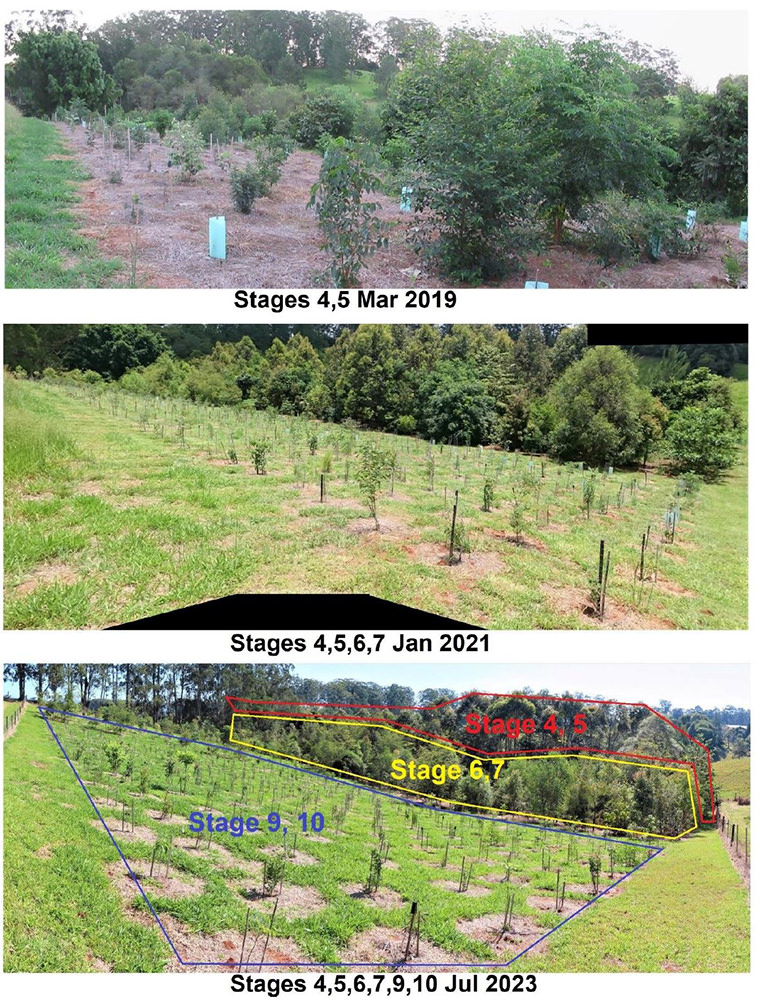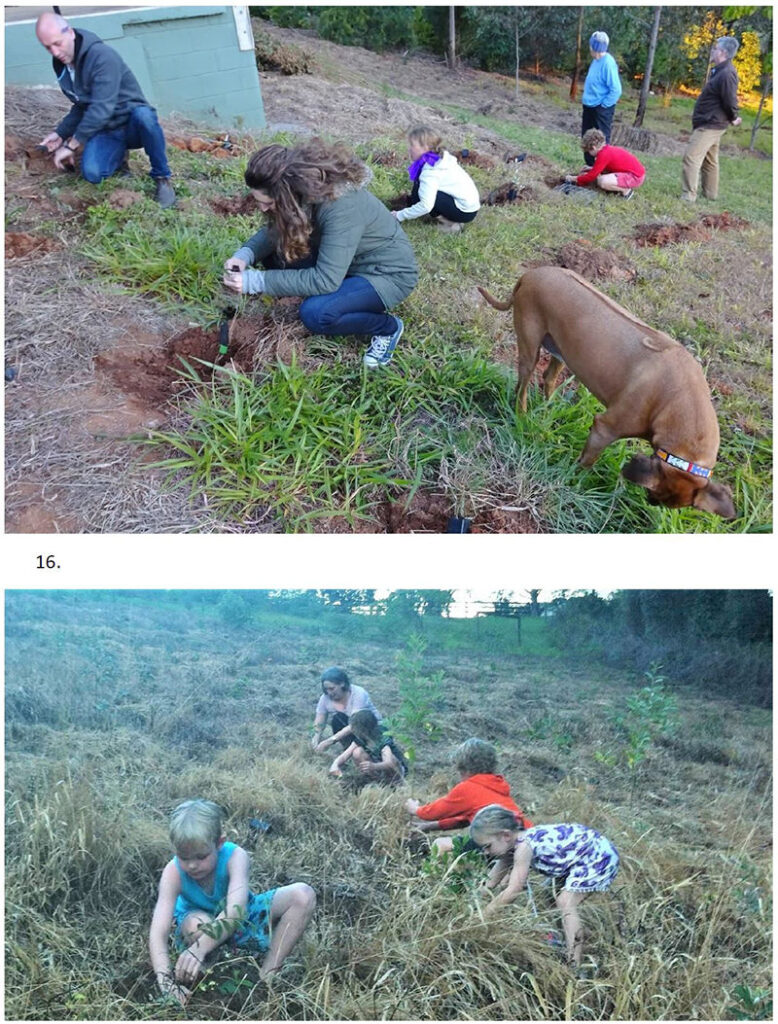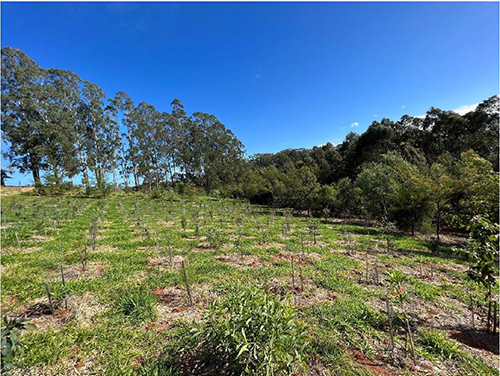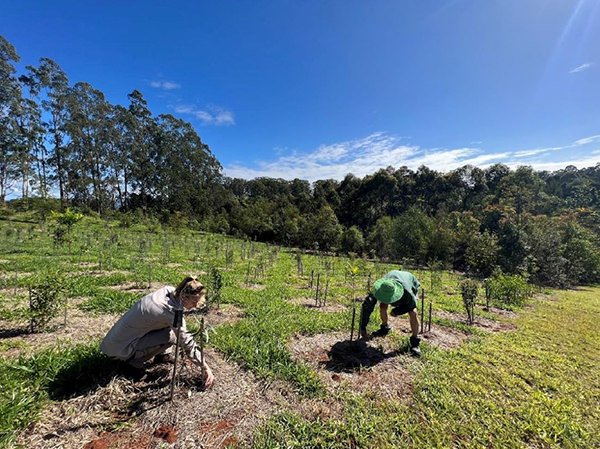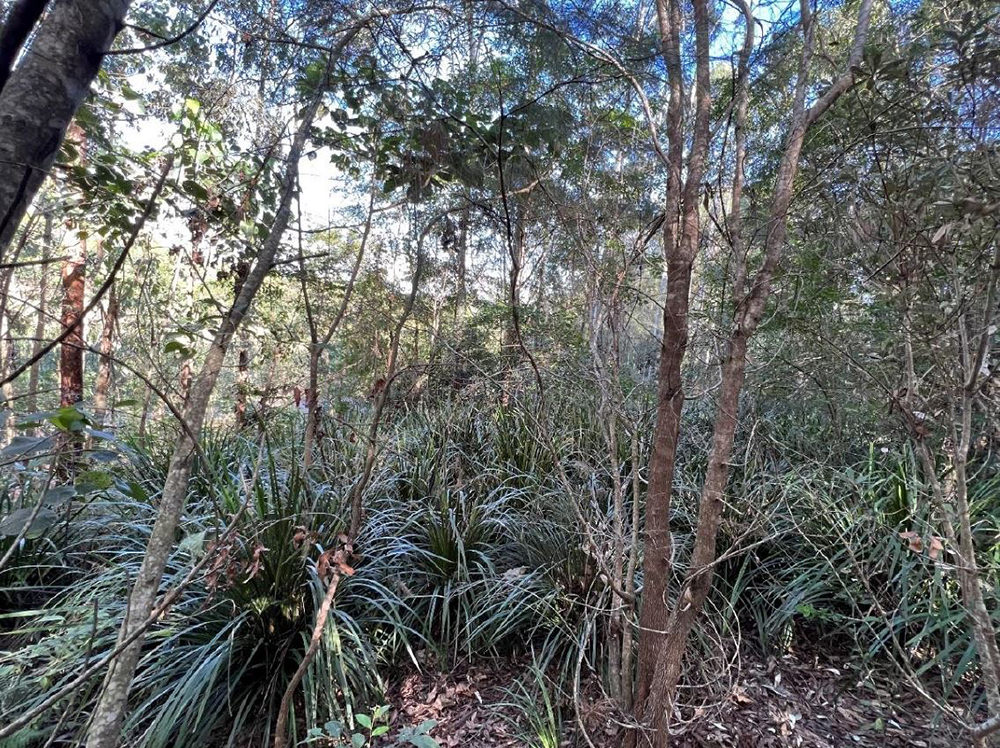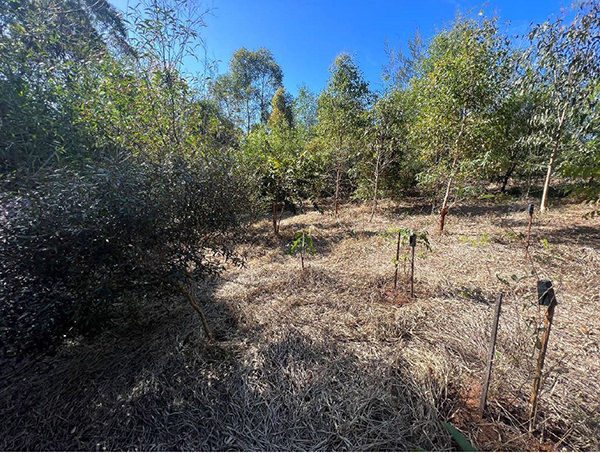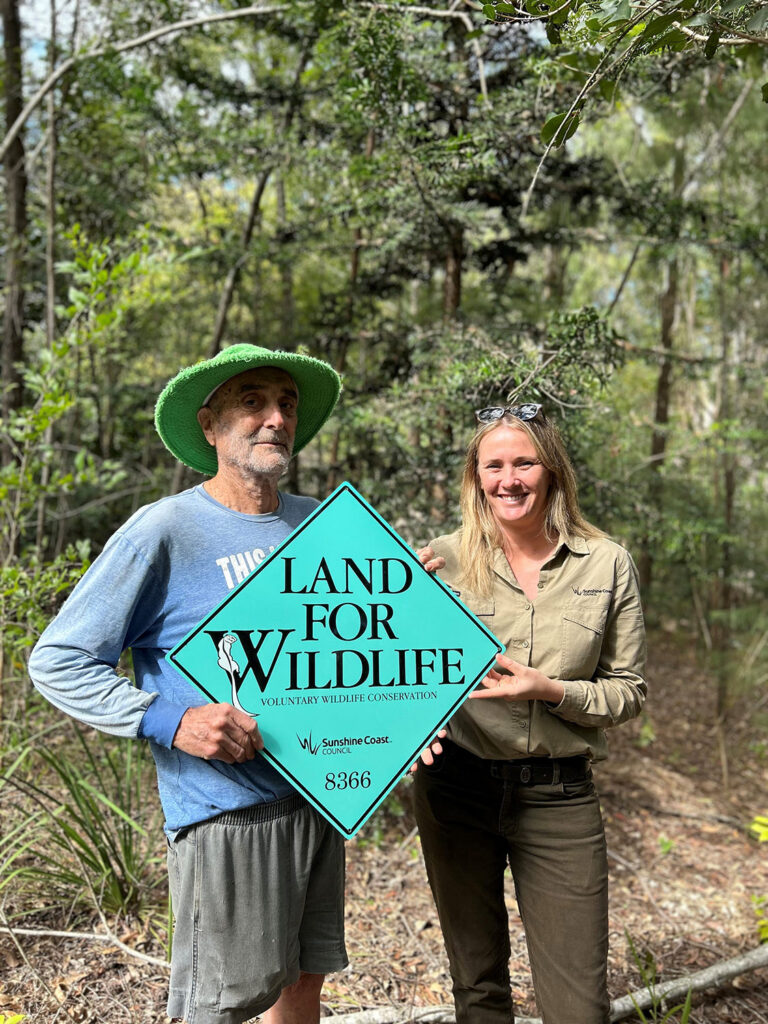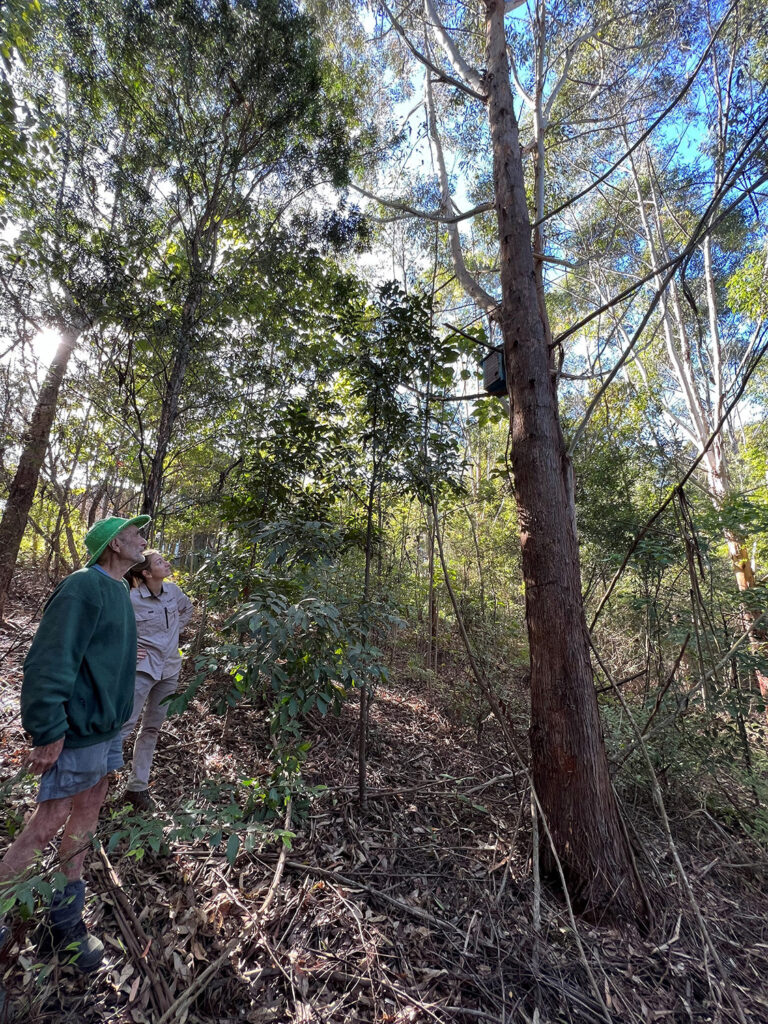Arecent visit to a Land for Wildlife property in Palmwoods showcased the wonderful conservation outcomes that can be achieved through dedication, hard work and long-term goals. Wandering through the young forest, many would be surprised to know that all of it has been carefully planted as it emulates natural bushland with its structure, diversity and wildlife within.
Norm Morwood has spent the last ten years undertaking revegetation and weed control on his daughter Karen’s property, which is positioned in a fragmented semi-rural landscape. Much of the surrounding area was cleared historically for farming and livestock. Purchased in 2012, and currently shared with four inquisitive alpacas, the property was previously a pineapple farm and was totally cleared, aside from one large fig tree. It is ten acres in size, some of which was also leased out for ginger farming and used for grazing.
“For me I do what I do because I’ve found it the most personally satisfying activity to be creating habitat for wildlife while hopefully improving the planet for the humans. It provides me personally with lots of exercise, so I have no need for gymnasium fees. It is very satisfying to see the effect that restoring habitat in this location close to a major town is having. It’s a small project in some ways but makes a major contribution to joining up patches of remnant bush and also fills a major need in restoring forest in the local creek.” Norm Morwood
Many family planting days have been enjoyed over the years, with friends and relatives being rewarded with a campfire and barbeque after a day’s work.
Regional ecosystem mapping indicates most of the property would have been tall open eucalypt forest with some vine forest and a section of wet eucalypt forest in the lower gully. Due to previous land usage, disturbance and lack of remnant vegetation, Norm found that there was next to no natural regeneration occurring.
Thanks to Norm’s ongoing revegetation efforts the property is now well on its way from bare paddocks to native bushland, providing a home not just for wildlife, but where Karen and her family can live “surrounded by forest”. With the ever-increasing pressure of urbanisation on the Sunshine Coast, and the many threats to wildlife that come with it, creating refugia in these landscapes is of great importance to provide habitat and a safe haven for wildlife passing through.
Norm has a wealth of knowledge in bush regeneration and is a valued member of the bushcare community on the Sunshine Coast. He is currently a volunteer coordinator and the founder of not just one, but three bushcare groups. Norm first became involved in the bushcare program back in 2002 after joining and then coordinating the newly formed Moore Park Bushcare group in Indooroopilly.
As a mining engineer with a background in mine rehabilitation, Norm is passionate about restoration and moved from Brisbane to the Sunshine Coast in 2007, where he enjoys his one-acre property in Woombye. Much of his time is spent transforming Karen’s property which thankfully is located only a short eight-minute drive away!
The plantings have been undertaken in manageable stages with a focus on canopy cover, allowing for the necessary follow up maintenance and weed control crucial to any successful revegetation project. Supported by the Land for Wildlife seedling incentive program and Landholder Environmental Grants provided by Sunshine Coast Council, the property is a wonderful example of what can be achieved through successful partnerships, collaboration, and commitment.
The first planting consisted of 50 mixed eucalypts in 2012, followed by infill planting and continuation up to the house and to the property boundaries. With stage 10 of the revegetation project recently completed, it is thoroughly rewarding for both Norm and Karen and the Sunshine Coast Land for Wildlife team to see the diversity of species and different age structures doing so well. As connectivity between areas continues to improve it is evident that Norm and Karen’s vision of restoring the property back to healthy native bushland is well on its way to becoming a reality.
Norm’s key learnings and interesting observations:
- Wire guards are best – cost effective and reusable. He previously used cardboard guards but found they caved in due to rain.
- White Cedars don’t need tree guards – the wallabies don’t like them.
- Native Hibiscus isn’t used in their plantings anymore due to plants falling over as they mature and unpleasant scratches and difficulty when mowing.
- Previously did staggered plantings, but now plants in rows to enable easy mowing and maintenance.
- Spray squares instead of circles for prep and maintenance – easier to mow.
- Dig an additional hole next to where the seedling is planted to capture water.
Wildlife observed on the property includes wallabies, bandicoots, gliders, possums, quails and a variety of other birdlife. The complex forest floor structure in the older revegetation plots provides lots of woody debris, logs and leaf litter for wildlife, with Rufous Fantails often seen hopping from branch to branch through the understory. The familiar and peaceful calls of Eastern Whipbirds provided a lovely backing track during our property walk, and Hoveas and Dogwoods were bursting with flowers, providing an eye-catching pop of colour as we walked through the revegetation areas.
Norm’s story is a fantastic example of a property that has successfully moved from ‘Working Towards’ registration to full ‘Registration’ with the Land for Wildlife program. With approximately half of the property revegetated and no signs of slowing down (stage 11 is underway to continue planting out the paddocks), we look forward to continuing to work with Norm and Karen on their Land for Wildlife journey.
When presenting Norm with the coveted Land for Wildlife sign, we also had an unexpected guest of honour join us – a striking Pacific Baza flew down and perched on a nearby tree to help celebrate this special occasion. What a wonderful and fitting way to finish off the visit!
Article by Stephanie Keys
Land for Wildlife Officer
Sunshine Coast Council

